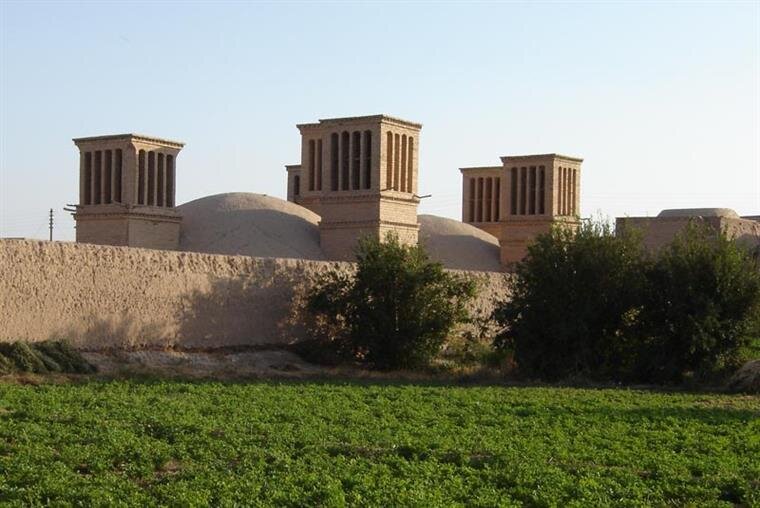Exceptional water reservoir undergoes urgent restoration

TEHRAN – Cultural heritage experts have commenced an urgent restoration project on an exceptional Ab-Anbar in central Iran. The underground water reservoir is of high importance in the realm of traditional Persian architecture as it is surmounted by seven mudbrick wind towers.
“The Ab-Anbar of Hosseinabad is one of the unique water reservoirs in the country as it has two tanks, two separate entrances, and seven wind towers,” a local tourism official said on Thursday.
The entire traditional structure is made of bricks, raw adobe, plaster, and sarooj, the official noted.
Such underground cisterns are parts of the iconic qanat systems, which rely on snow-fed streams flowing down from surrounding mountains. Qanats, according to UNESCO, provide exceptional testimony to cultural traditions and civilizations in desert areas with an arid climate.

In the times of yore and harsh desert climates and no electricity, the Persians had to devise a way to store and keep water cool.
The use of earth in buildings includes walls and roofs by the construction of vaults and domes. Houses are built with courtyards below ground level, serving underground areas. Wind-catchers, courtyards, and thick earthen walls create a pleasant microclimate.
With its winding lanes, a forest of badgirs (wind catchers), mud-brick houses, atmospheric alleyways, and centuries of history, Yazd is a delightful place to stay, referring to as a ‘don't miss’ destination by almost all travel associates in the region. Yazd is wedged between the northern Dasht-e Kavir and the southern Dasht-e Lut on a flat plain ringed by mountains.
AFM
